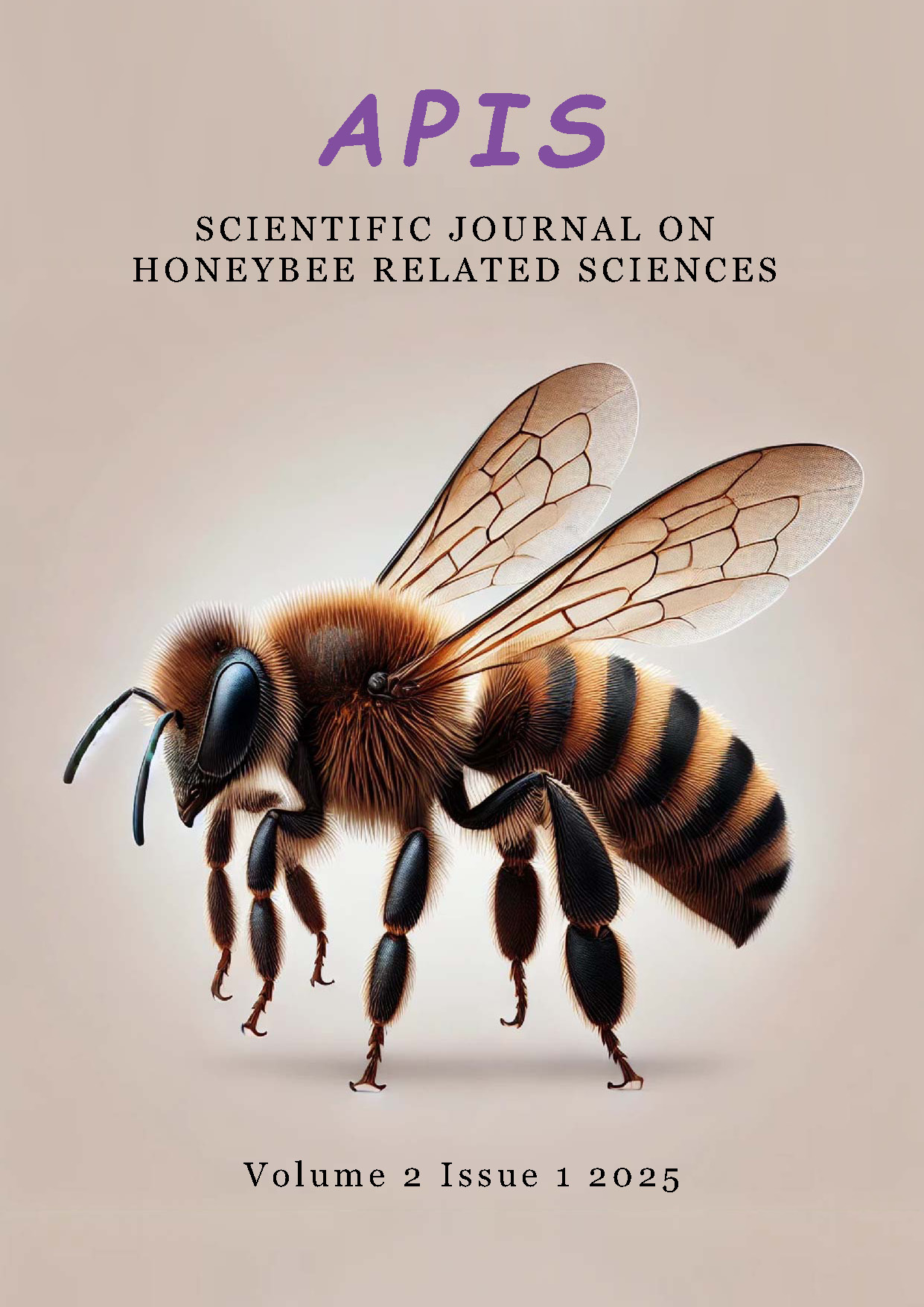Analysis of Pollen Samples from Hungary Based on the INSIGNIA 2023 Programme
Abstract
In 2023, under the INSIGNIA-EU project, pollen samples were collected across 315 locations in 27 European Union countries over nine sampling rounds. In Hungary, 15 apiaries from different geographic regions participated in the nine sampling rounds. However, two apiaries were unable to collect samples during certain rounds, resulting in a total of 133 domestic samples being analysed and evaluated. The Hungarian baseline data allows for further and more detailed analyses at both the national level and by individual apiary, sampling period, and plant species. Apiaries from more than half of Hungary’s 19 counties—specifically, from 10 counties and the capital—contributed to the INSIGNIA 2023 programme.
Across the 15 apiaries and nine sampling rounds, 173 plant species were identified in the samples collected by bees. The number of species ranged from 36–60 per apiary and 22–69 per sampling round. A smaller proportion of these species were common across multiple apiaries. The maximum number of shared species per apiary was 13–16, and the minimum was 3–7. Similarly, during sampling periods, the maximum number of shared species was 10–16, and the minimum was 3–11. Of the 173 plant species identified, 133 provided nectar and 40 were nectarless species producing only pollen. Bees predominantly collected from nectarferious plants. In total, 31 species were common to all the apiaries, of which 19 provided nectar and 12 were nectarless.
The most frequently occurring species across all 15 apiaries included nectarferious cultivated agricultural plants such as Brassica napus, Brassica rapa, Helianthus annuus, and the nectarless herbaceous wild plant Plantago lanceolata (NN). These plant species included both short- and long-blooming varieties. By sampling period, the most frequently visited species were Chelidonium majus (NN), Plantago lanceolata (NN), Trifolium repens, and Papaver rhoeas (NN).
Within specific sampling periods, the highest quantities were observed for Brassica napus, Anthriscus cerefolium, Helianthus annuus, Papaver rhoeas (NN), Plantago lanceolata (NN), Robinia pseudoacacia, and Clematis vitalba (NN).
The plant species collected in the largest quantities varied by apiary:
⦁ Raphanus raphanistrum (Békéscsaba)
⦁ Phacelia tanacetifolia (Nagykovácsi)
⦁ Plantago lanceolata (NN) (Budafok, Újszentmargita, Drávafok, Nemesvita)
⦁ Papaver rhoeas (NN) (Zámoly, Pannonhalma, Páhi, Fertőendréd)
⦁ Papaver somniferum (NN) (Mezőfalva)
⦁ Brassica napus (NN) (Vizsoly, Murakeresztúr)
⦁ Helianthus annuus (Szalánta)
⦁ Ononis spinosa (Kiskunmajsa).
Significant plant species included Brassica napus, Plantago lanceolata (NN), Helianthus annuus, Papaver rhoeas (NN), Clematis vitalba (NN), Anthriscus cerefolium, Ononis spinosa, Phacelia tanacetifolia, Solidago gigantea, and Trifolium repens. Among species occurring in only one apiary, some were specific indicators of local regions, while others were cultivated agricultural plants potentially grown elsewhere, such as Amorpha fruticosa, Ballota nigra, Castanea sativa, Centaurea cyanus, Chelidonium majus (NN), Crepis setosa, Hypericum perforatum (NN), Lythrum salicaria, Melilotus albus, Papaver rhoeas (NN), Pisum sativum, Raphanus sativus var. oleifera, Sanguisorba officinalis (NN), Sinapis alba, and Tripleurospermum maritimum (likely Matricaria chamomilla).
Regionally, in 2023, the Southern Great Plain (Dél-Alföld) region’s three apiaries recorded the lowest number of plant species, while the highest diversity was observed in the apiaries of the Northern Hungary (Észak-Magyarország) region.
Copyright (c) 2025 Etelka Rőzséné-Büki

This work is licensed under a Creative Commons Attribution-NonCommercial-NoDerivatives 4.0 International License.




